Radex Lupin: When the light can be counted
Bright evening all!
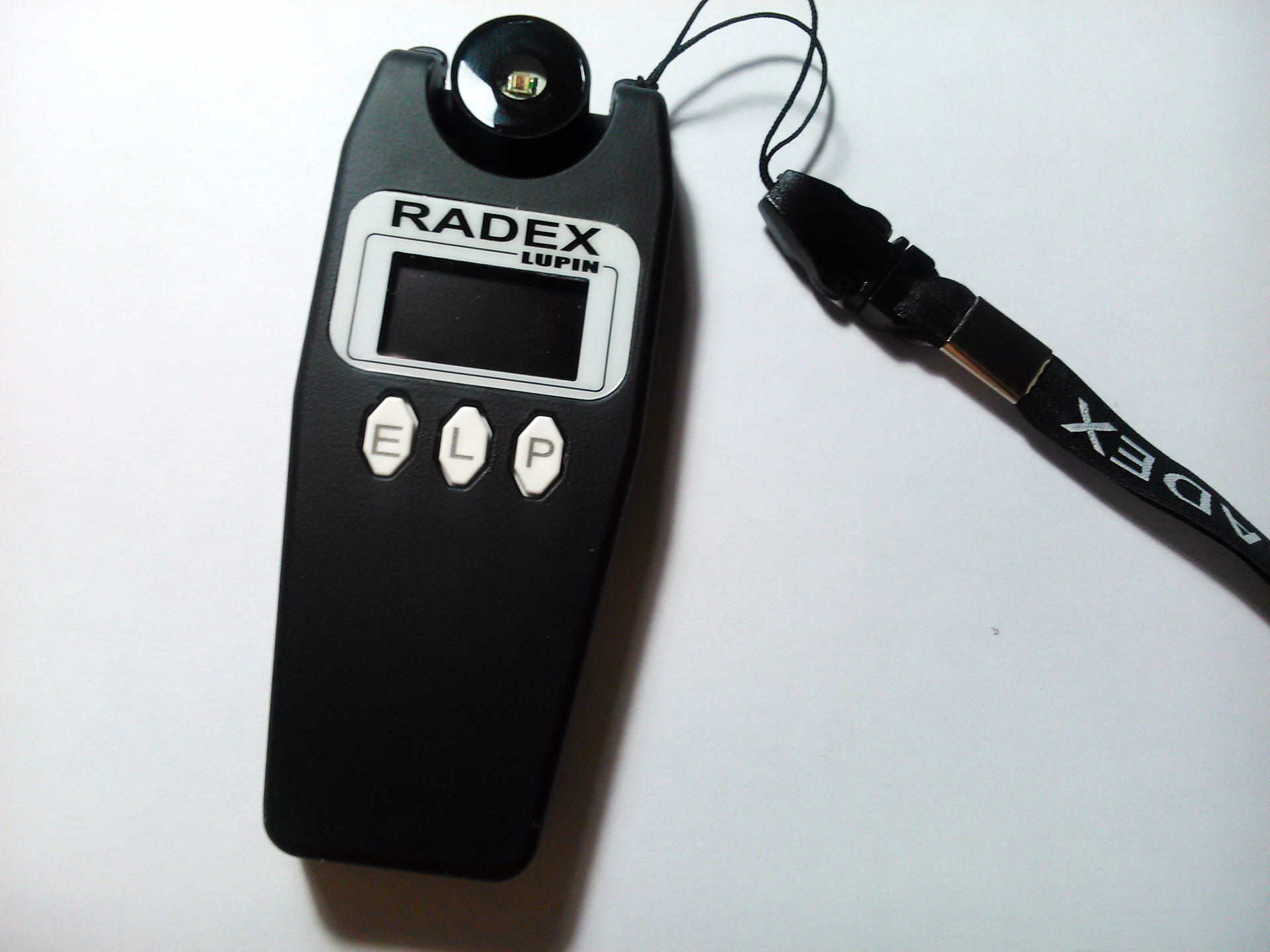
In fact, I am a hopeless owl. In those blessed times when you don’t have to get up anywhere and you can choose your own waking hours, I rarely go to bed before 7 am and even less often I get up before dinner. And I also live in those latitudes where it is cold for three months, the other nine are very cold, and sometimes the sun peeks over the horizon only to ensure that it is not forgotten. And I am a programmer and ... In general, artificial lighting is my sacred cow, which allows me to spit on all kinds of circadian rhythms. So, when Dadget offered me a review of the Radex Lupin light meter, I could not resist getting this toy in my tenacious paws and walking with it through all the lamps in the house. Do you want to look at what came out of all this? Then be sure to look under the cat: today under it is an overview of the luxmeter itself, a test of a pile of light bulbs, a few tips and one small surprise for fans of geek porn. And a whole bunch of photos, yes.
Why do we need it at all?
Good question, by the way. The guys who are engaged in biology and other natural sciences, tell us that the light to some extent affects our nervous system, vision, ability to concentrate and a lot of other interesting things that determine our condition. If it is even simpler - for some time, improper lighting can bring a person to the state of weak-willed and unable to concentrate even on something decent vegetable and vice versa - high-quality light contributes to excellent well-being and excellent health.
')
And which light is the best?
Natural, what else. But if Sunny has already gone beyond the horizon, but you still don’t want to go beyond the horizon, you will have to turn on the light bulb. And with her everything is much more complicated. And in order to choose the best, you will have to remember what parameters a light stream has.
Brightness
The good old Vicky tells us that this is the ratio of the intensity of light emitted by a surface to the area of its projection on a plane perpendicular to the axis of observation . This case is measured in candela per square meter and is even considered one of the main SI units. True, as a rule, we don’t need her
Illumination
It depends on it - will you break your favorite eyes about your equally favorite book or not. The same Vicky hints that illumination is a light quantity equal to the ratio of the luminous flux falling on a small surface area to its area . It is measured in lux, and one lux is equal to one lumen per square meter. To understand how much you need these most suites for comfortable work, there is such a sign
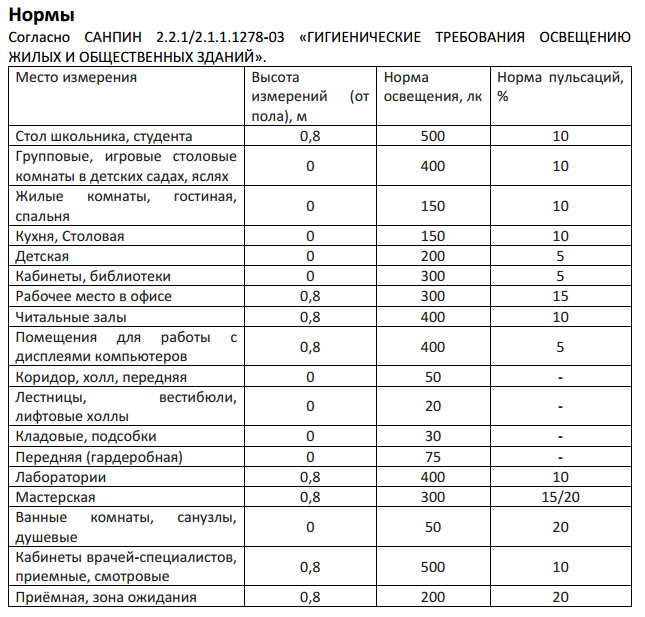
By the way, for reading from this paper, an illumination of at least 50 lux is recommended. If you follow these recommendations, there is a rather big chance that your eyes will last you several decades longer. In my opinion, it is quite a good reason to screw in an extra sweetheart
By the way, for reading from this paper, an illumination of at least 50 lux is recommended. If you follow these recommendations, there is a rather big chance that your eyes will last you several decades longer. In my opinion, it is quite a good reason to screw in an extra sweetheart
Ripple factor
As long as we are under natural light, this does not concern us. The only problem is that the current that feeds almost all artificial light sources is variable. Yes Yes? Do you have a permanent one? Happy for you. But for myself - not very. Because alternating current, oddly enough, is in fact alternating and all these pulsations are somehow visible to our eye. And despite the fact that we don’t see the blinks themselves (there wasn’t enough), they are not influencing us. Doctors do not get tired of telling us that a high ripple rate can result in fatigue, fatigue, poor sleep, poor performance and other unpleasant things that we would like to avoid. Therefore, the less your light flickers - the better. True, in our country, in the Russian Federation, it is believed that all this is related only to pulsations at frequencies up to 300 Hz. They say that all that is higher, is not perceived by the human eye and the brain at all and does not interfere in any way, and therefore - at least die
Color rendering index
The thing is not so important for you and me, but without it, it's all the same nowhere, especially if you work with the camera. Roughly speaking, this index shows the degree of conformity of the color of a body visible with a particular type of lighting. So, if in the photo, your favorite red T-shirt looks slightly green, this is exactly it
With the parameters figured out? Now, let's try to measure something. First, however, will have to decide what. To determine the brightness, we need a brightness meter , for illumination - a luxmeter , and to determine the ripple coefficient - a pulse meter . To hang around with a box of three gadgets is somehow inconvenient ... Is there anything that allows us to measure everything at once? Aha There is!
And what is there?
The Radex Lupin light meter pulsmer brightness meter from the company Dadzhet allows to measure the first, second, and third with high accuracy. And he ideally enters the hand and is comfortable to carry with him. And he knows how to determine the frequency of pulsations. And it can be turned into a portable portable device with a flick of the wrist ..., however, more on that later. For now, let's take a look at it.

Nice little box. To be honest, I expected her to be at least twice as healthy. Seen on advertising? Then we take out the box from the wrapper.
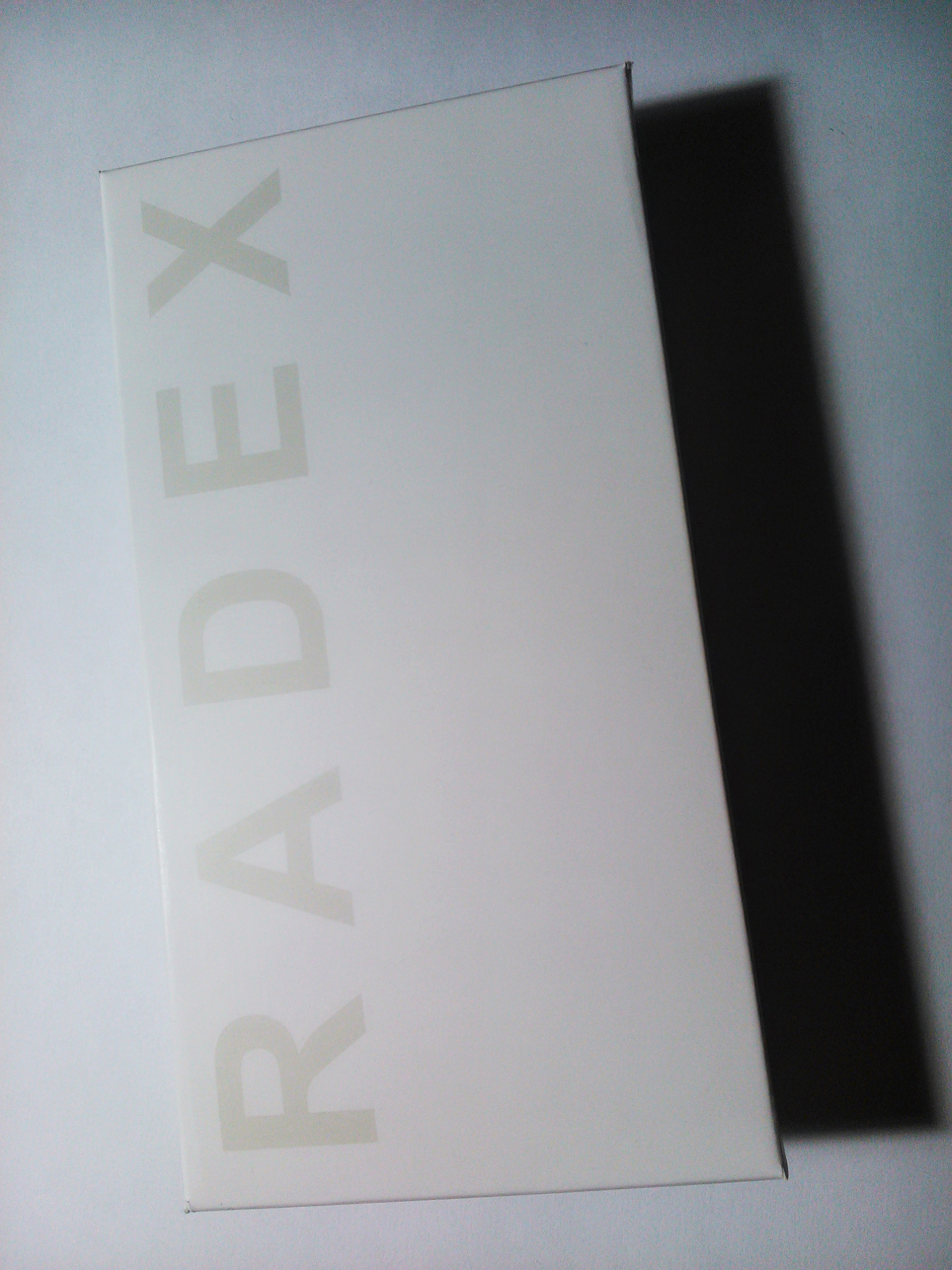
Modestly. For some reason, it reminds me of boxes from Swiss watches ... Maybe the accuracy of this luxmeter will be the same? Now find out! Open up!
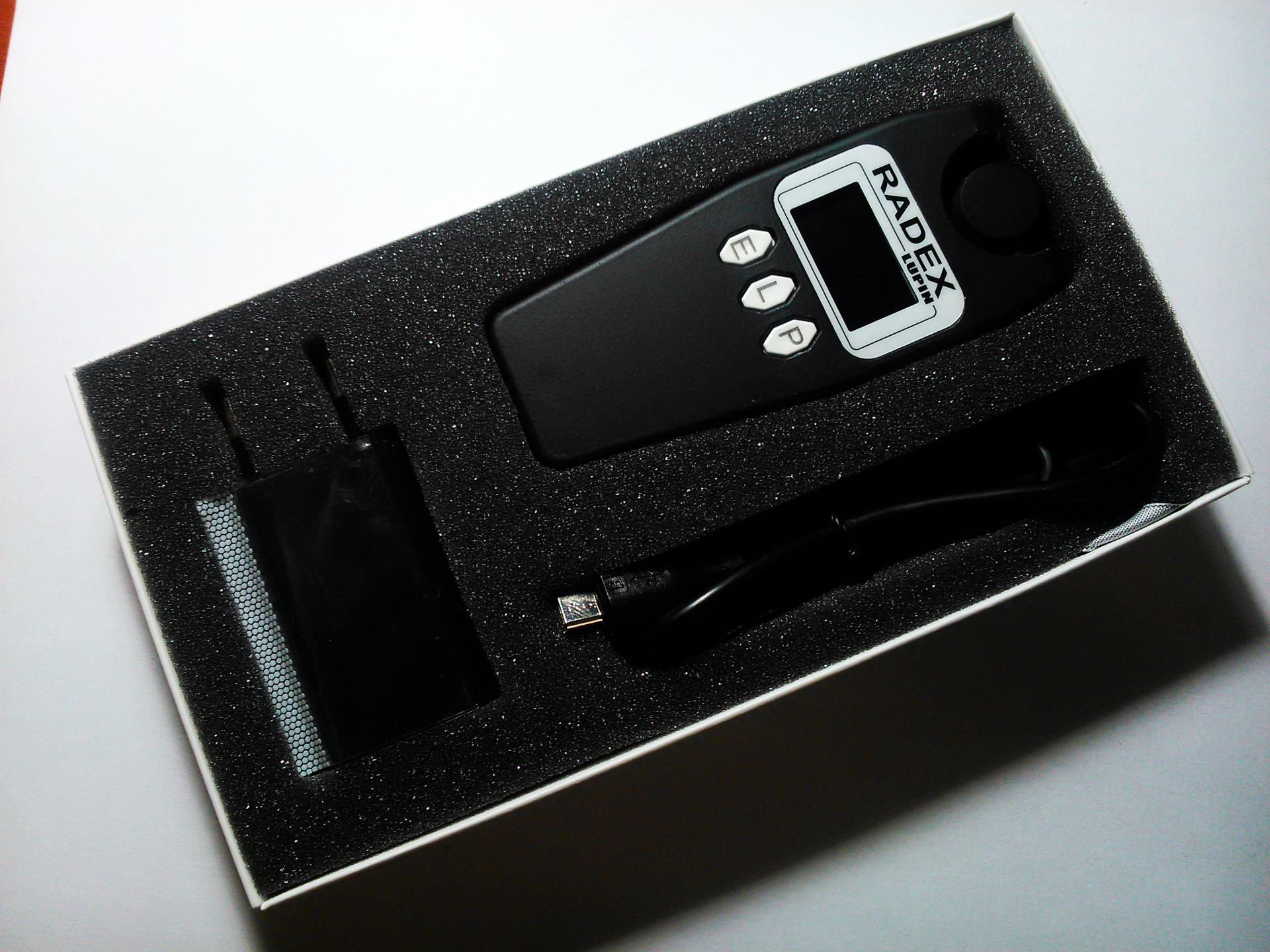
Cool, I always do not have enough charge, somewhere they constantly fly away. As for the luxmeter itself, it is even smaller than I thought even after I saw the box. This can be put in the pocket of jeans, nothing will be done with it. I wonder how it turns on?
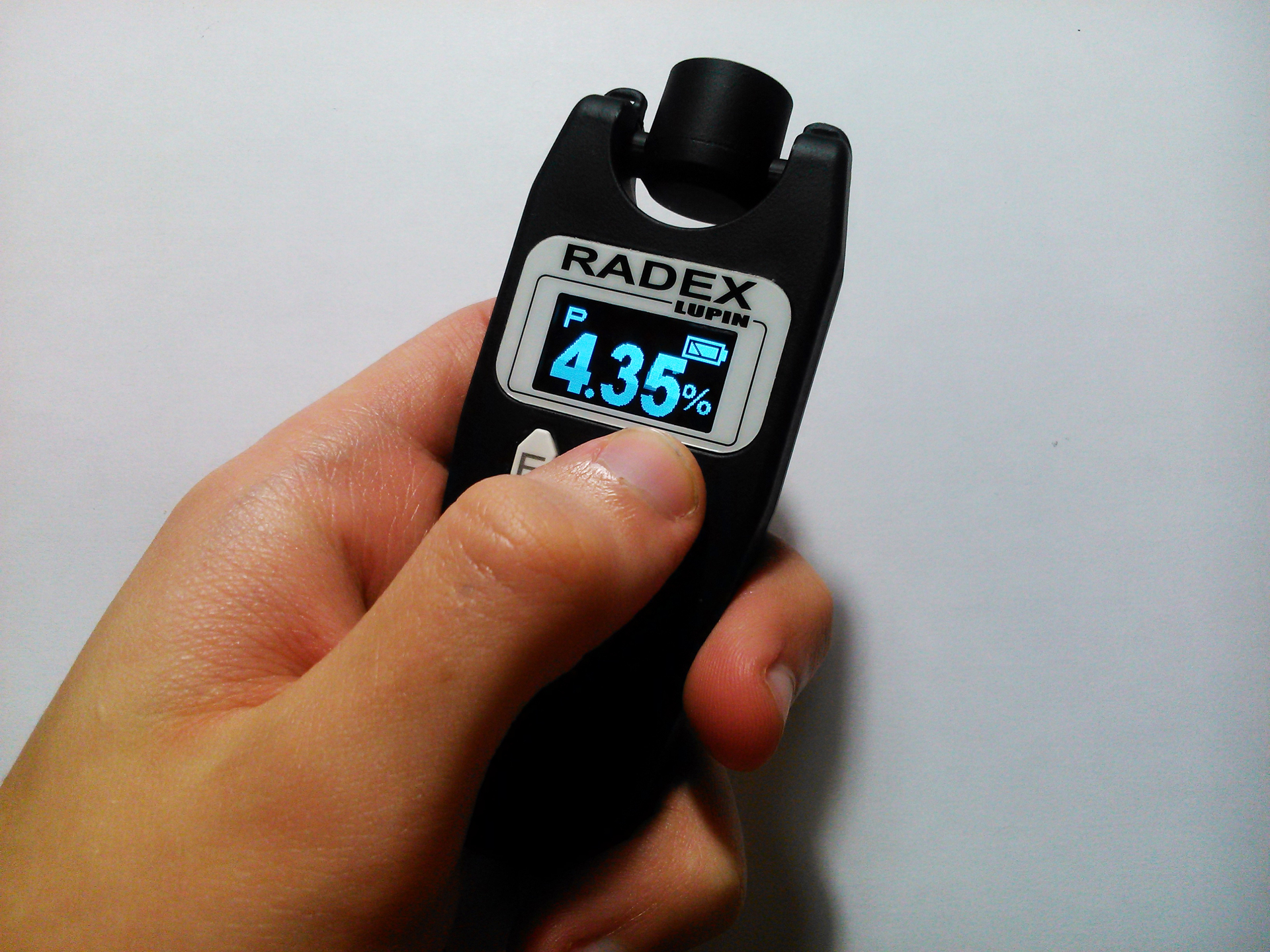
Yeah, just click on any of the three buttons, as he starts to show something. Okay, let's set it aside for a sweet and see what else is there
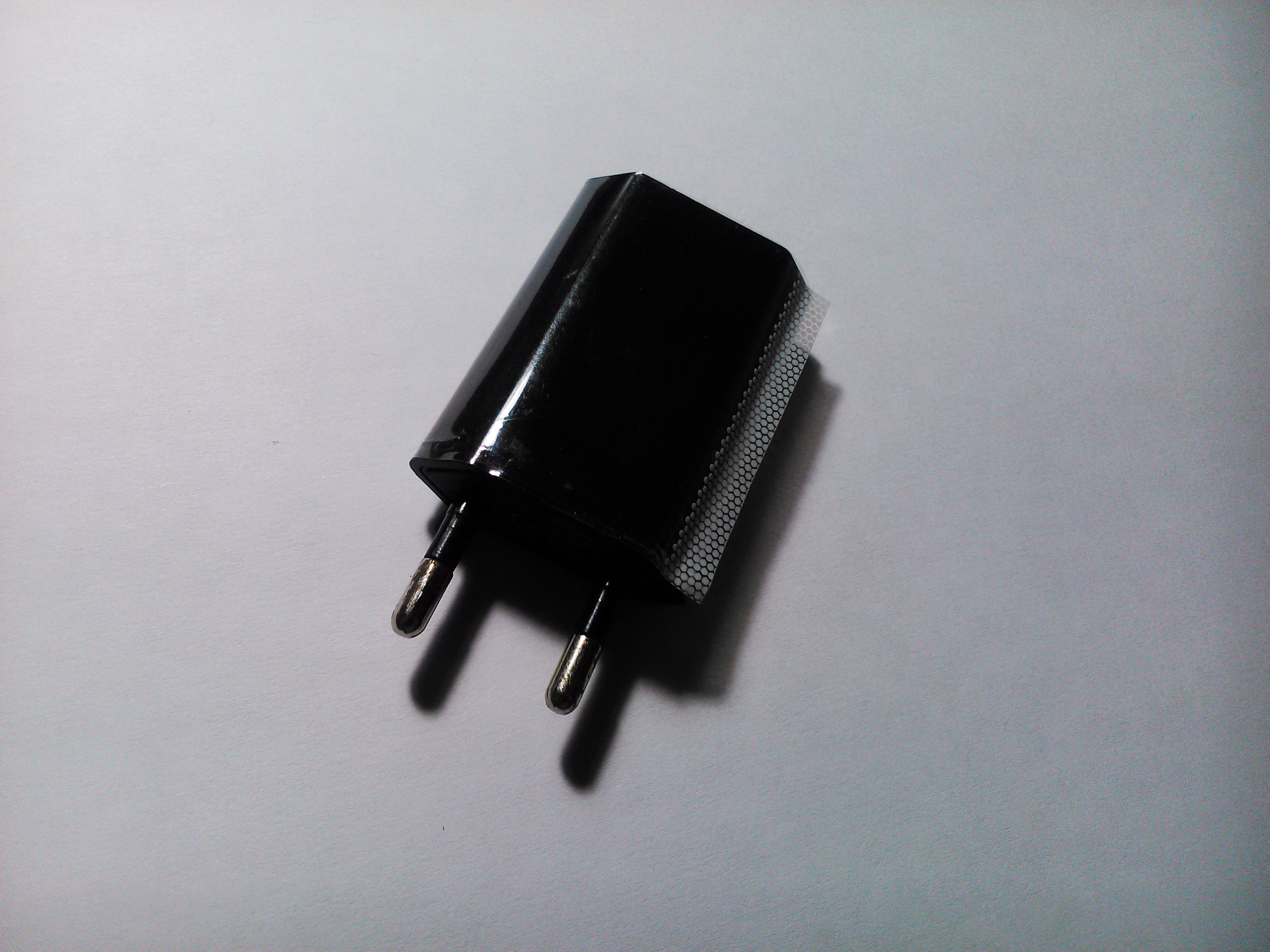
Charging. The usual 220 AC → 5 DC adapter, judging by the inscriptions on it, as much as a whole amp. Nothing out of the ordinary, but pleasant, because even for the sake of cheaper things, even some phones come with only one cord.
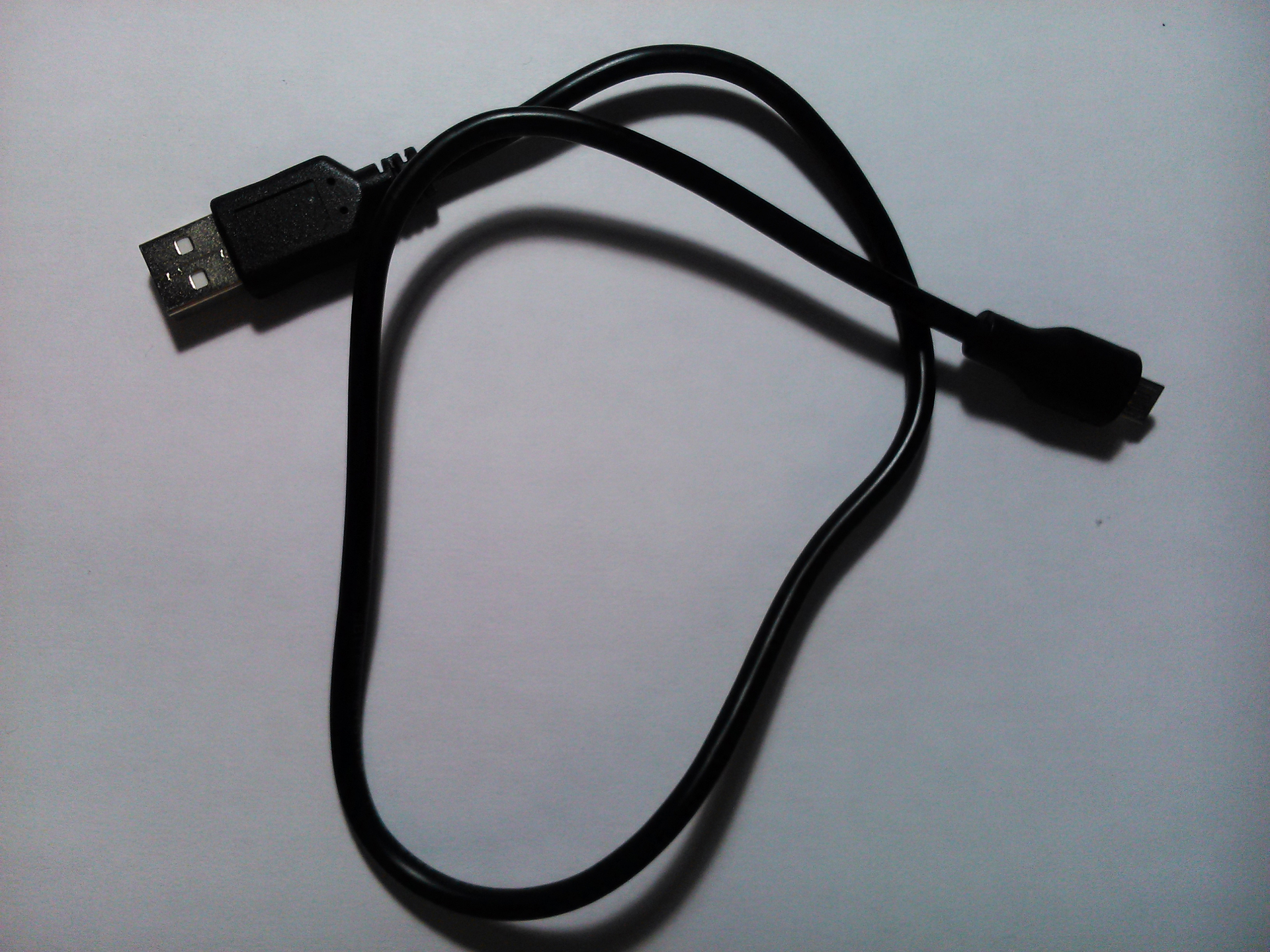
Well, here he is. Solid, thick USB → MicroUSB cable. True, a little bit short, so you won't get far from charging. However, the cable has another purpose, which later
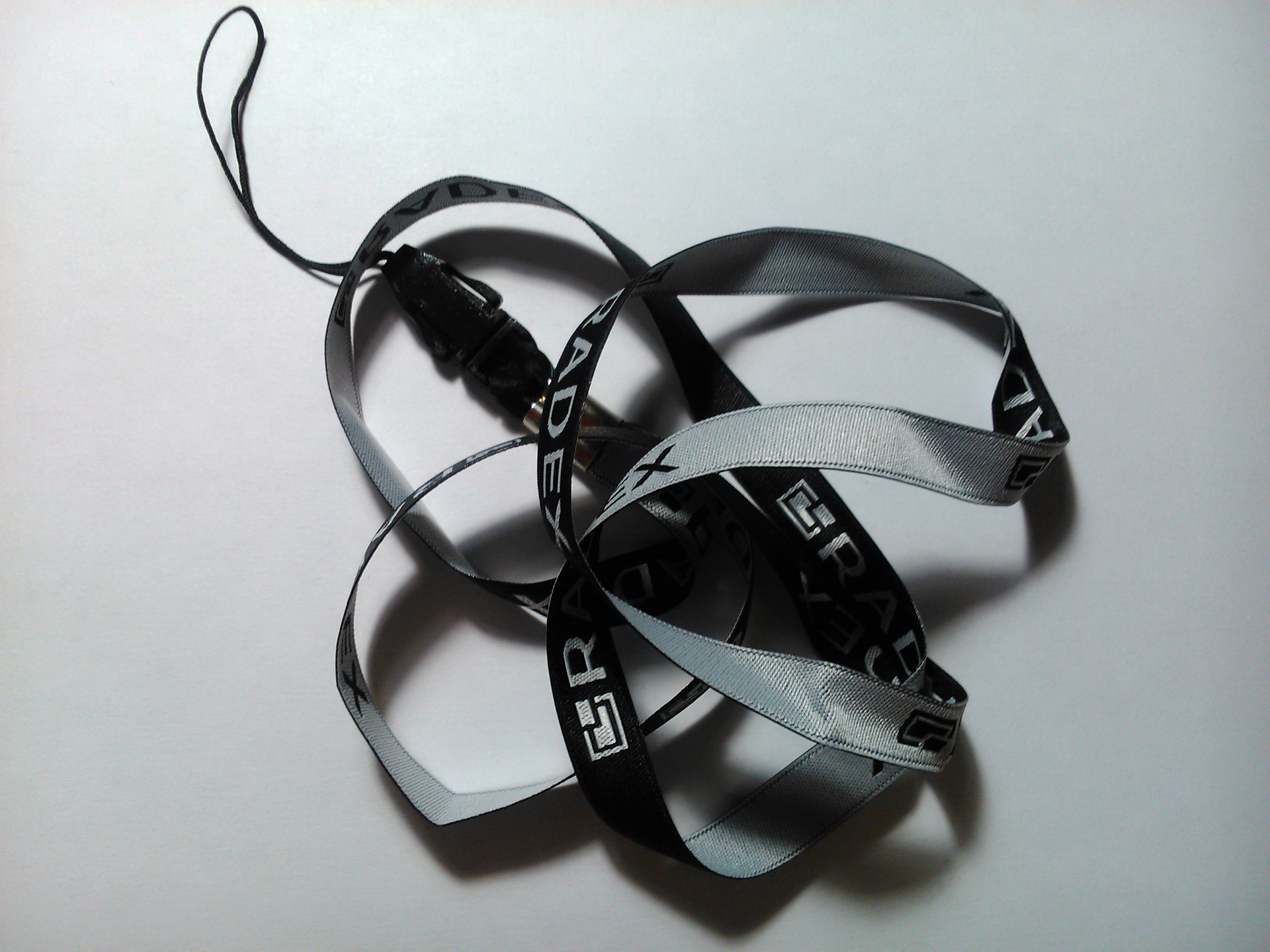
Wow, lace! Memories of the distant 2005 year immediately climb into my head, when I finally had my first mobile phone and immediately hung it around my neck. However, a light meter on a string is actually convenient, because dragging it between measurements in your hand, in which there is also a piece of results ... well, a nice thing
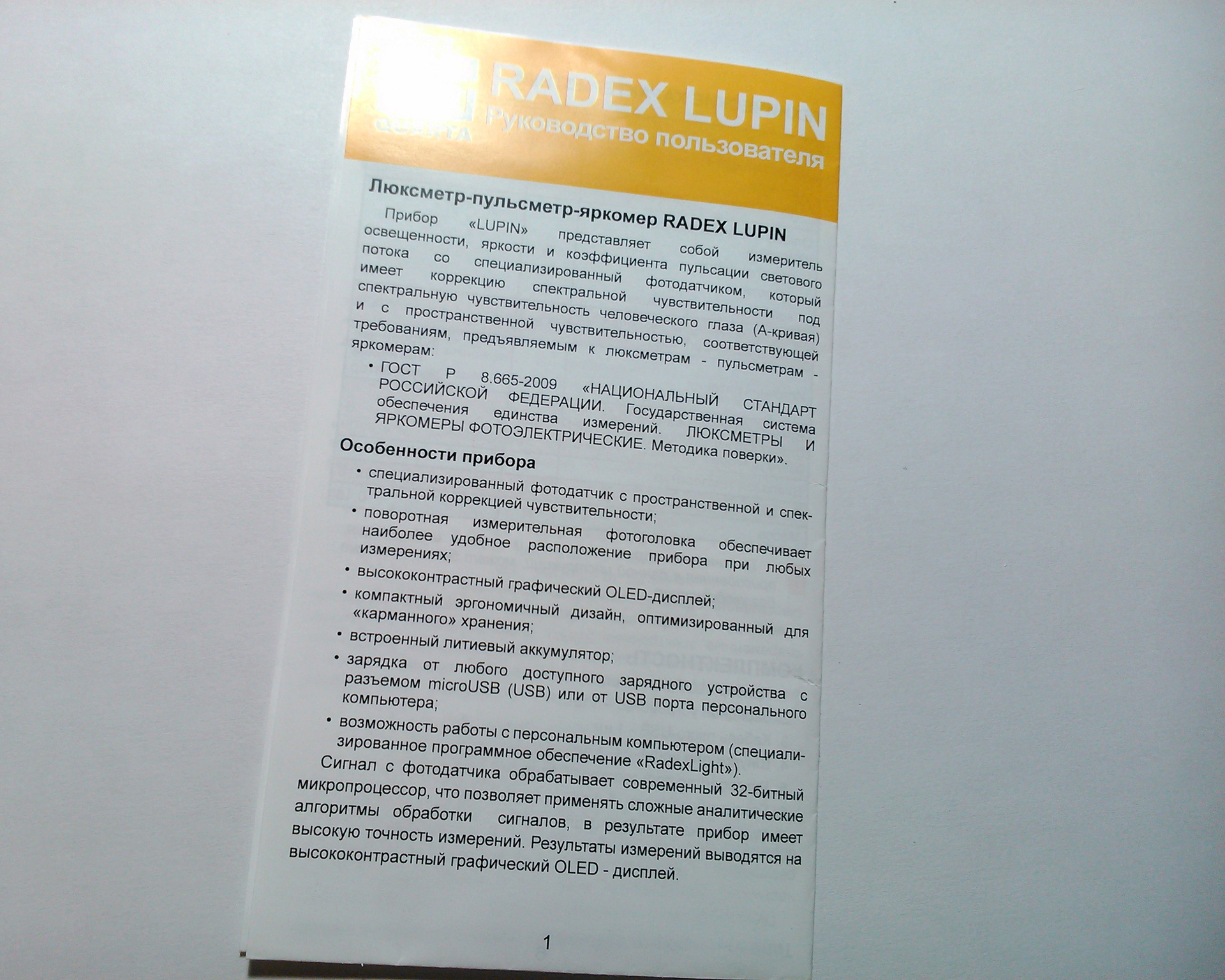
Instructions. In a few years, this is probably the first one that I read before I break a lux meter. Why? Well, firstly, it is with pictures. And secondly - it says how to measure illumination, brightness and pulsations correctly. Want to read too? Hold
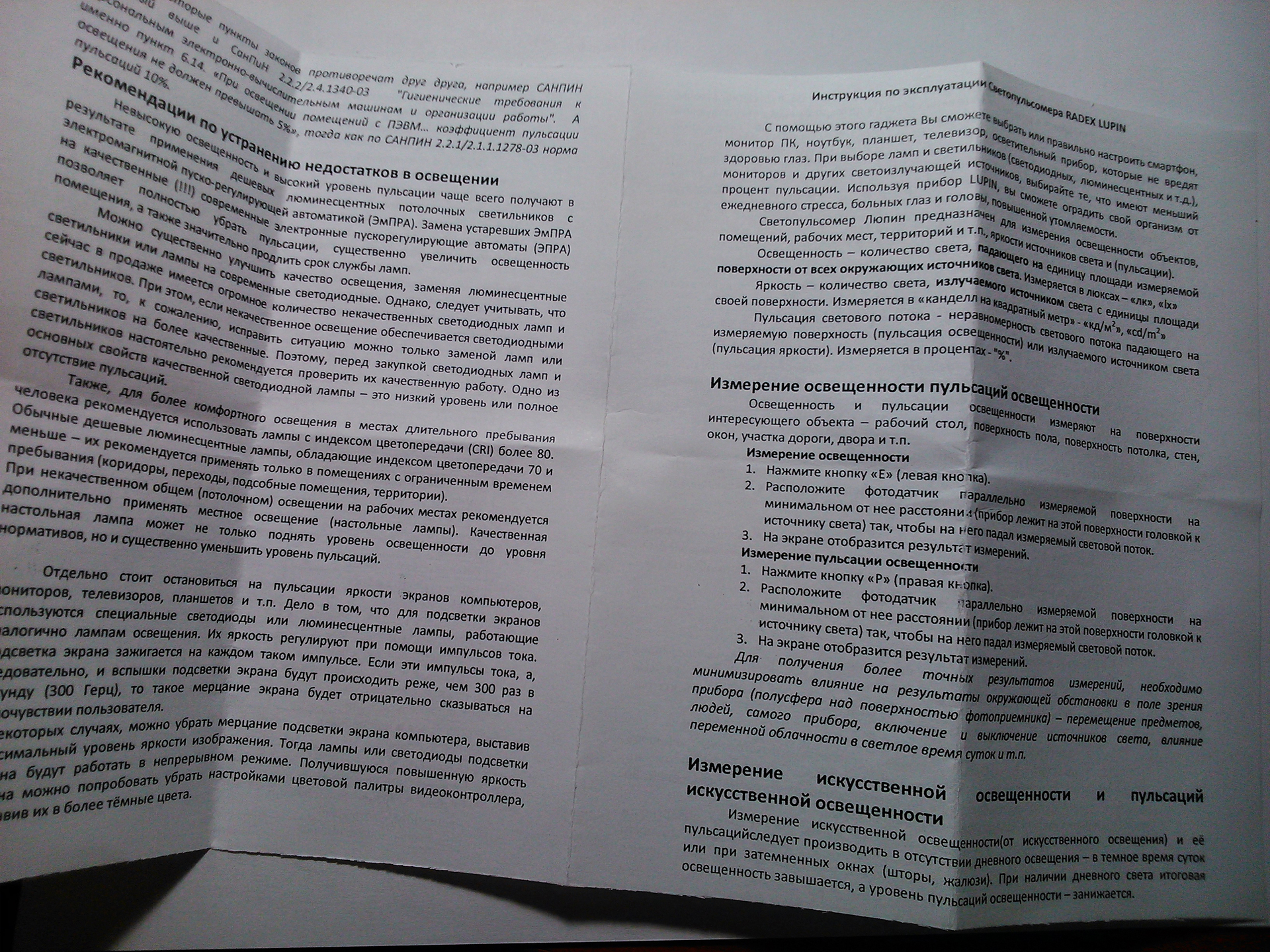
Uh-uh ... another instruction? No, I certainly like to read, but I like the previous one more. She is more beautiful. So let's put this matter aside and finally deal with the luxmeter itself.
For a start, technical specifications:
Hmm, if you believe them, it turns out that Lupin was never a toy, but quite a decent luxury (and other) meter. At least, not creeping out of the atmosphere, it will be difficult to get to the upper limits (illumination outside the atmosphere is about 135,000 lux), and the lithium battery is going to save us from having to search for batteries in the house. I’m waiting - I’m not waiting for Li to start putting cheap wireless mice on it.
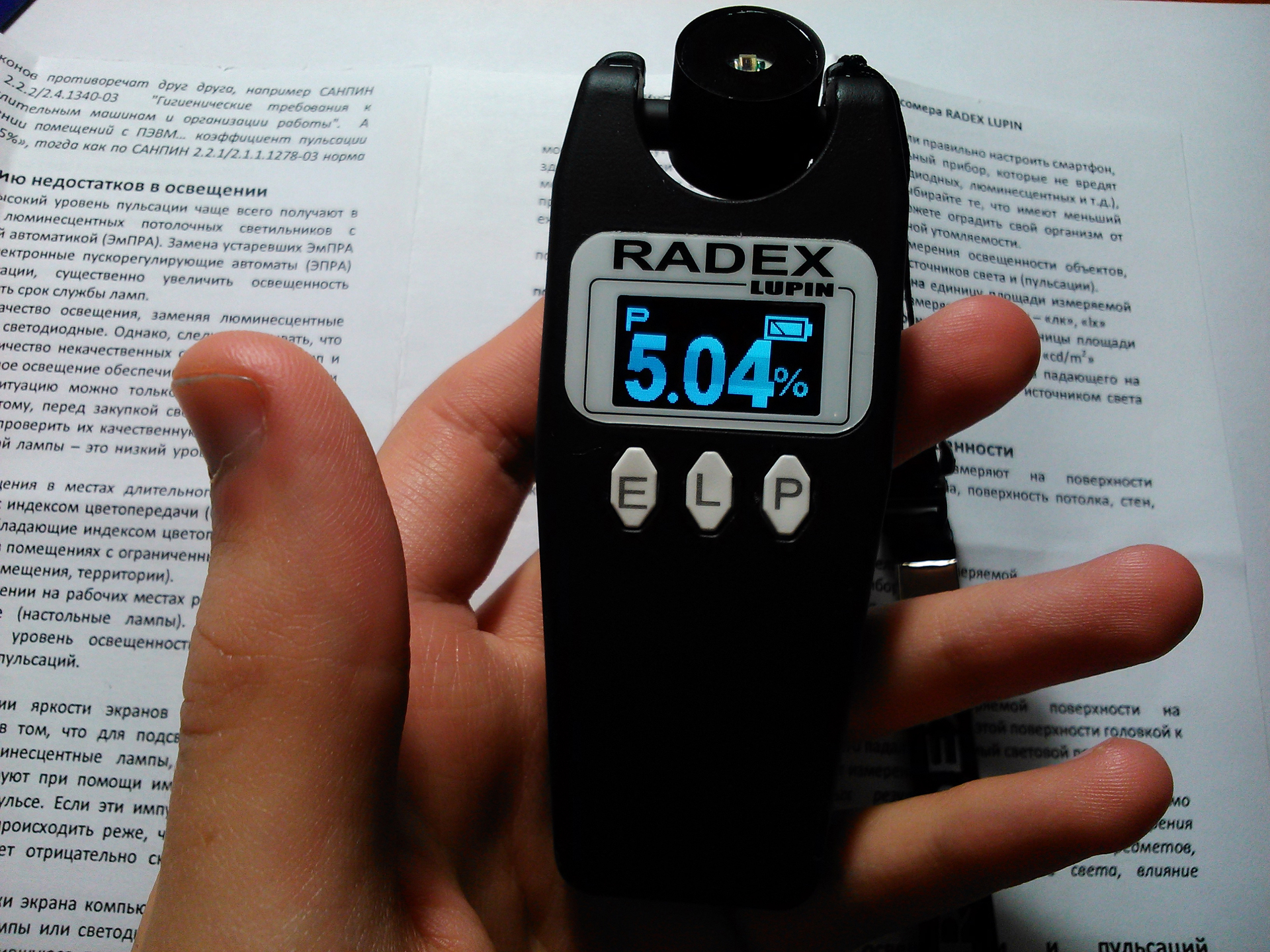
And once again - the device to the madness is small. And he also has quite a nice soft-touch surface. That is, it is convenient and pleasant to hold in hands such. The control here is simple to ugliness: there are only three buttons on the front panel. The first one includes a light meter, the second one is a brightness meter, and the third one (and what remains for it) is a pulse meter. And if you don’t press the buttons for 70 seconds, the device will turn off and now it’s not very convenient, you just have to measure it, especially since it’s not so difficult to recharge the battery, even if you forgot to turn off the device. Okay, let's leave this matter to the developer’s conscience and look at the display.
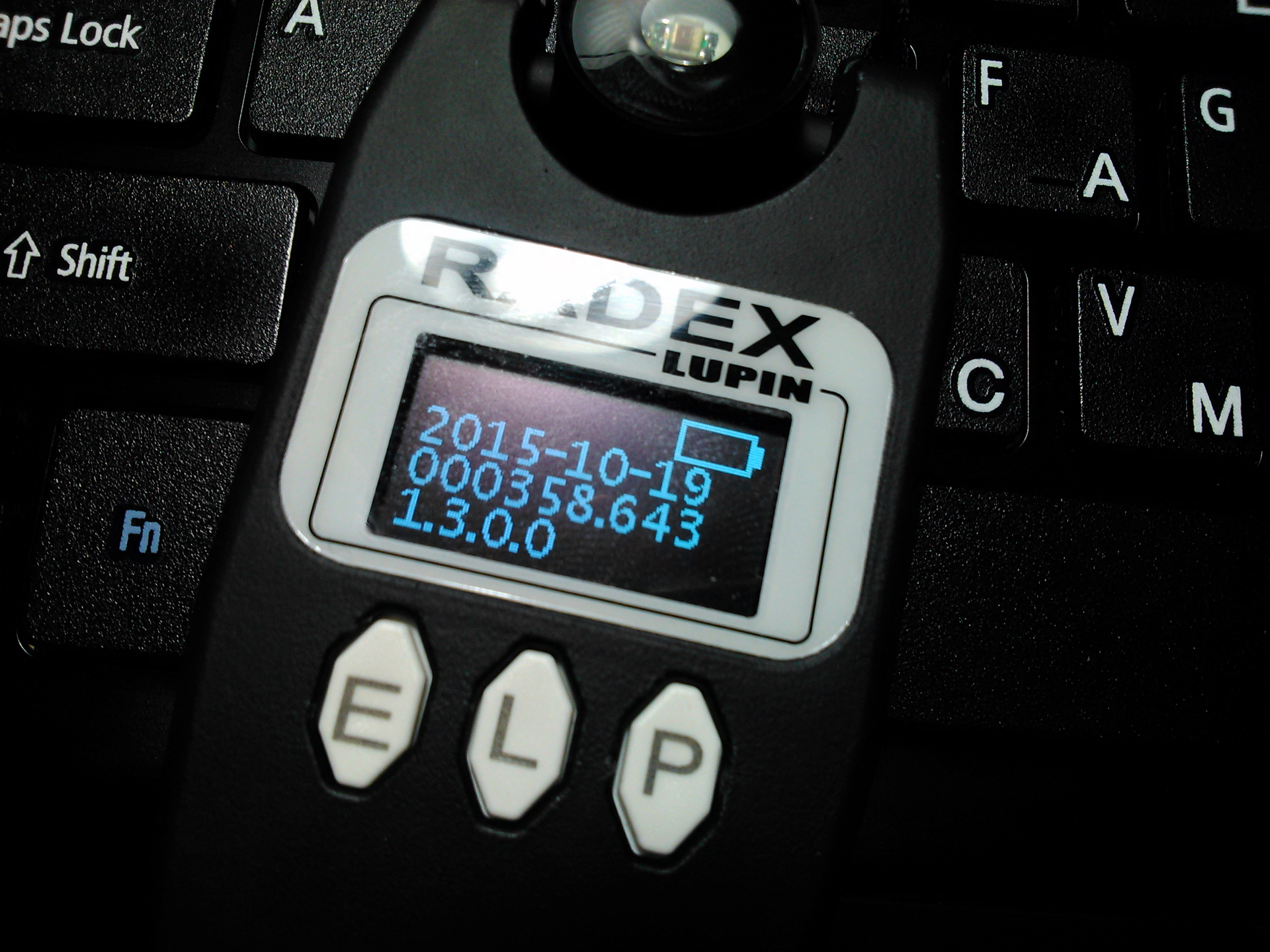
We have it here OLED, inverse, and yes even graphic. Just a holiday, especially after wh1602 of the same type - similar and disgustingly readable display. In the upper bar we have an indicator of the current mode (E - Illuminance, L - Brightness, P - Pulsation) and a battery indicator. Why does he have a diagonal strip at once is not very clear, but apparently, the device is charged. At the bottom of the screen, the measurement results with units of measurement, as well as the X1000 indicator, hinting that the result should be multiplied by this very thousand, because the screen did not fit in a different way. By the way, to get the same picture as mine, hold down the two extreme keys - look not at the firmware number and the date of its release. Austere, functional, nothing superfluous.

Using the device is simple. Press the key that is responsible for the mode, direct the head of the luxmeter to the light source where you want to measure the illumination and get the result. The head itself is swiveling, you can turn it anywhere, but it is fixed in three positions: “up”, “on us” and “away from us”. By the way, if there is not enough light to get reliable data, an additional icon will appear in the top bar, suspiciously similar to the letter “O”. Understood? Let's measure something then? For example, the illumination of my desk:
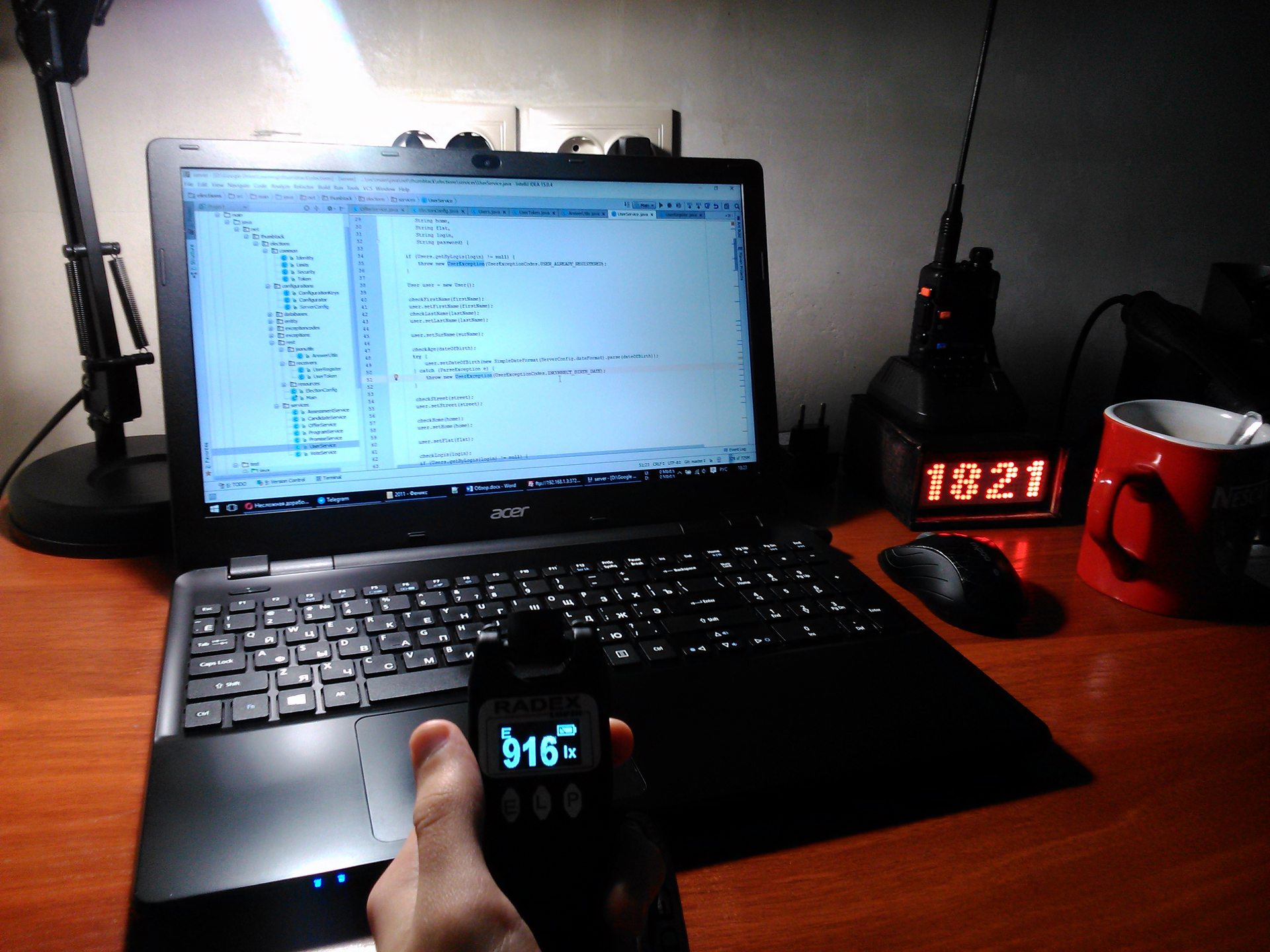
Almost kilolux! In general, it seems to be true, a 20W fluorescent light bulb, and even the sun that has not gone beyond the horizon ... In general, it should be light for me to work. And look at the ripple?
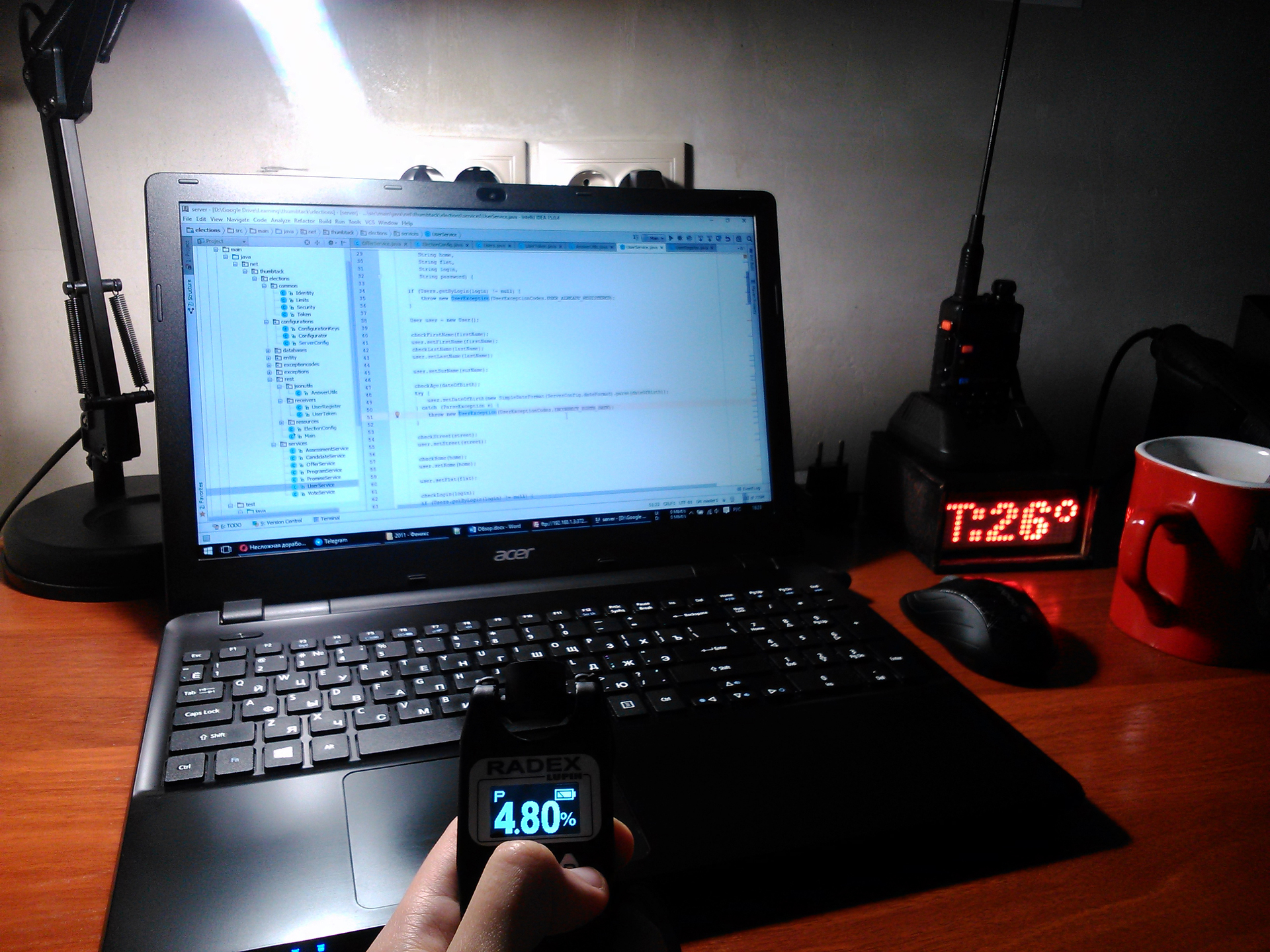
Already not so good. According to SNiP, the ripple factor in a room with computers should not exceed 5%. I have it right at the top ... Can the light bulb change?
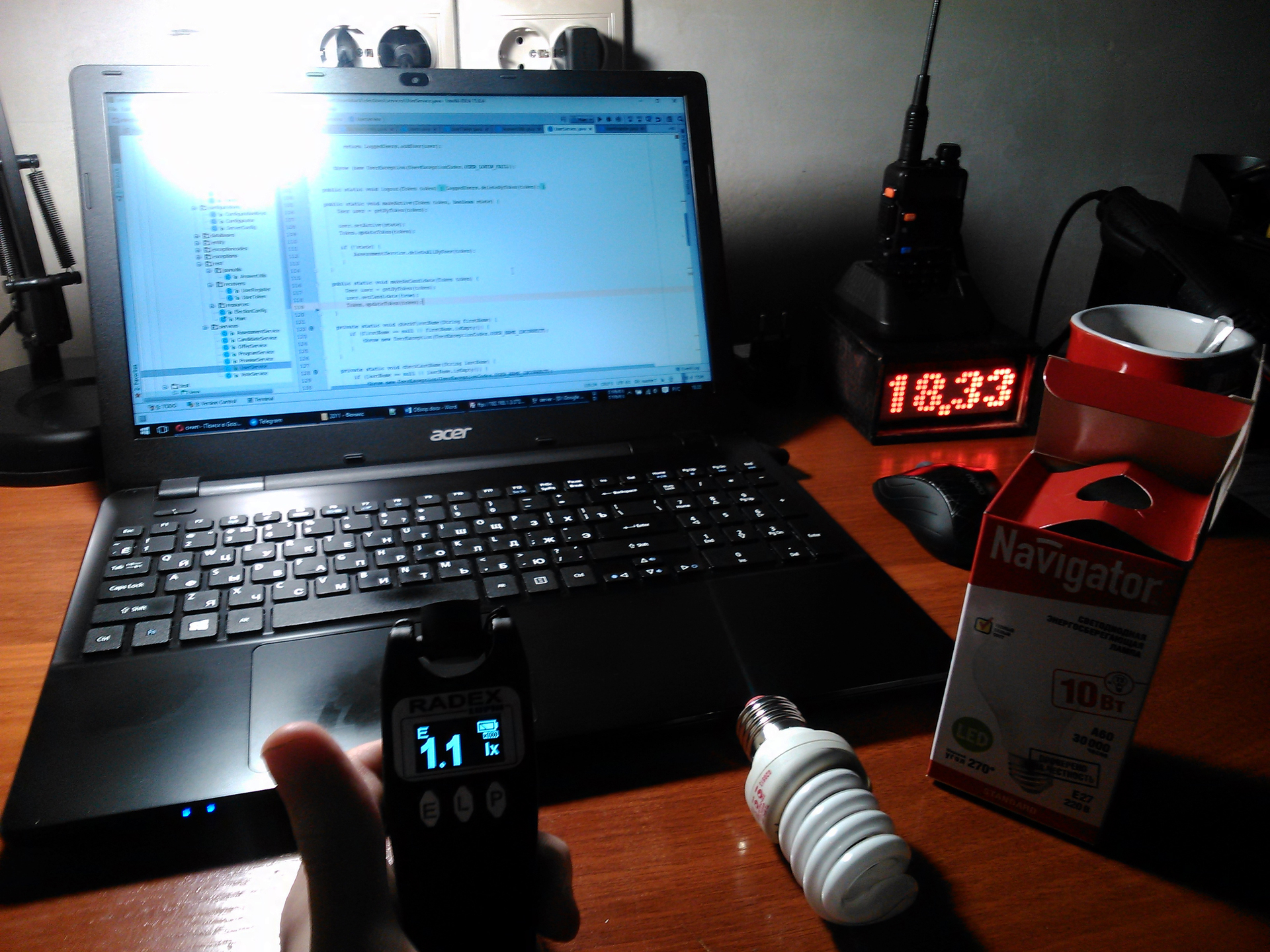

Well, the LED 10-watt from the Navigator. The same kilolux, but the pulsations became clearly less. I wonder if I would feel better?
And how are we with the overhead light in the bedroom?
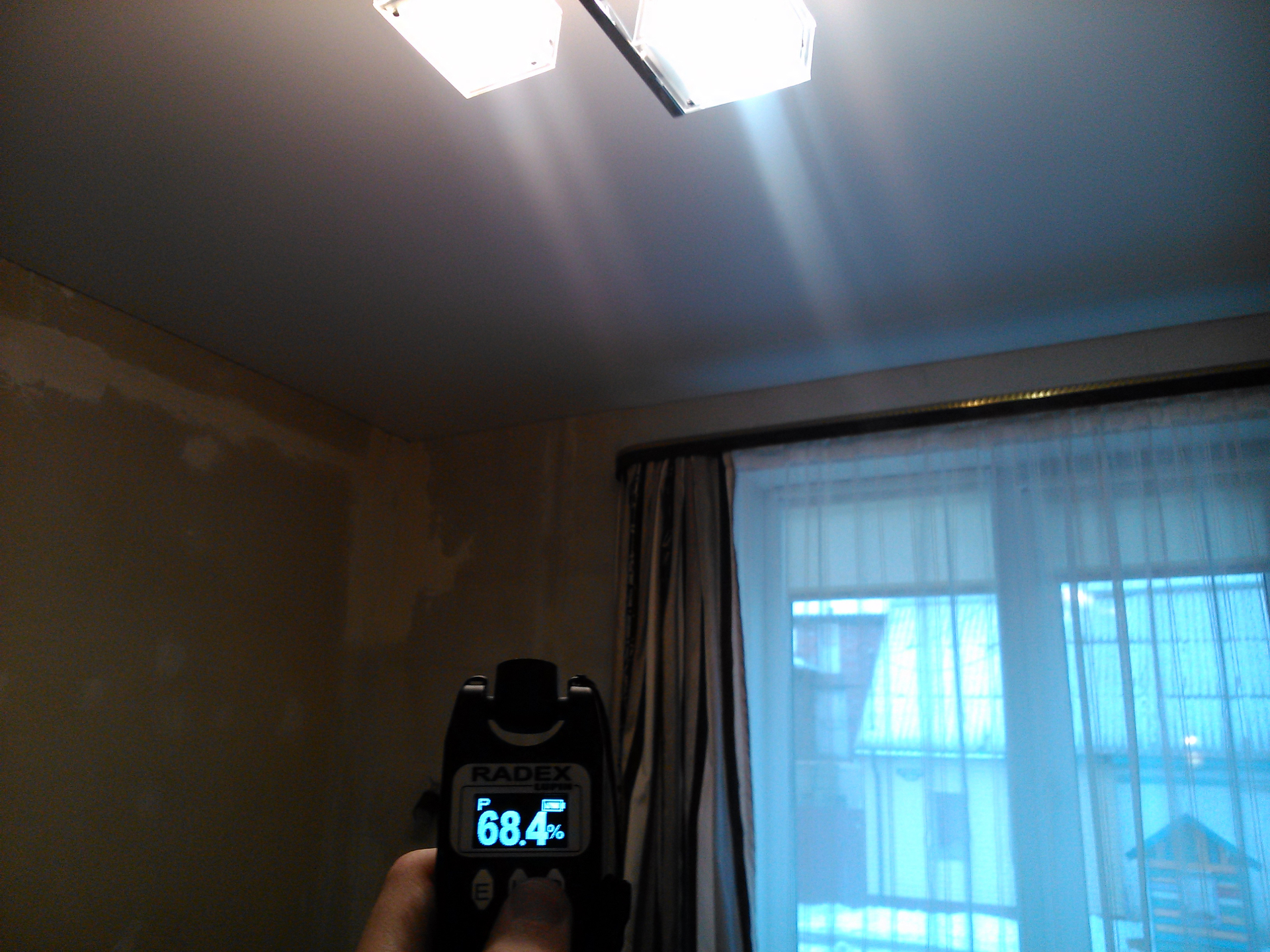
Oh you! Hello, Chinese undercondenser. Here they need to be exchanged as soon as possible for something decent.
And on the street?
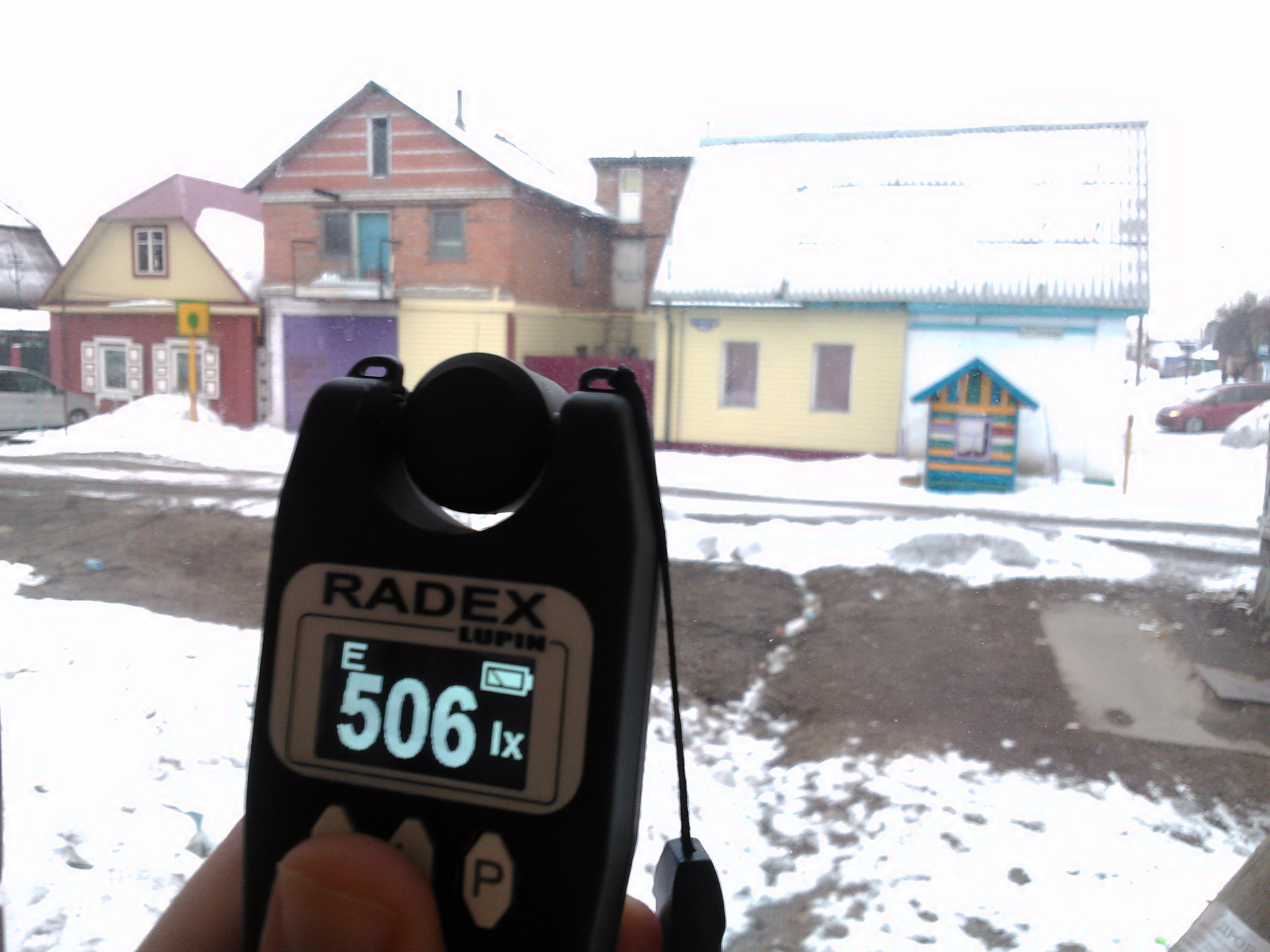

I told you that the sun here in Siberia is a decorative thing. But it does not pulsate :-)
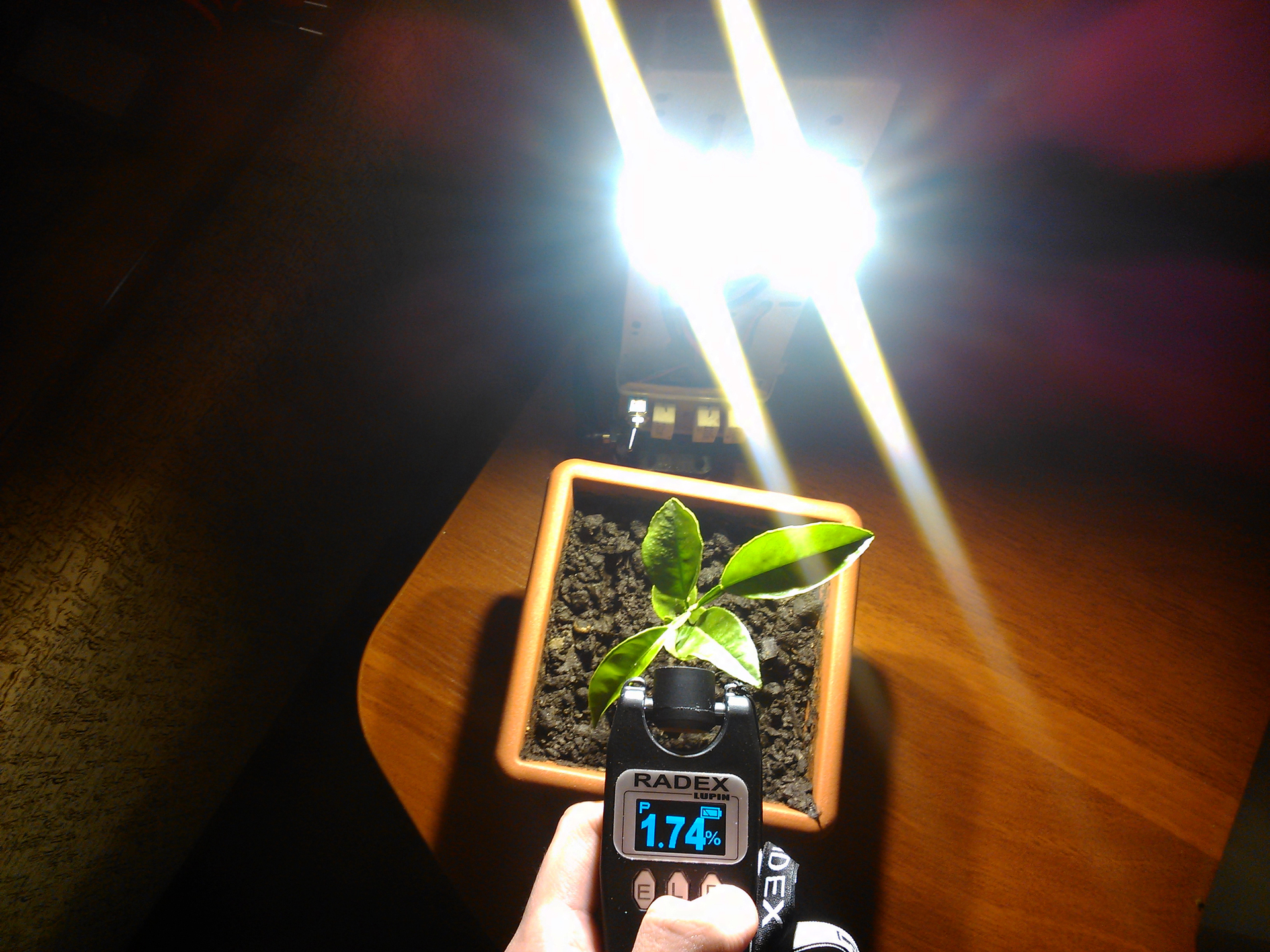
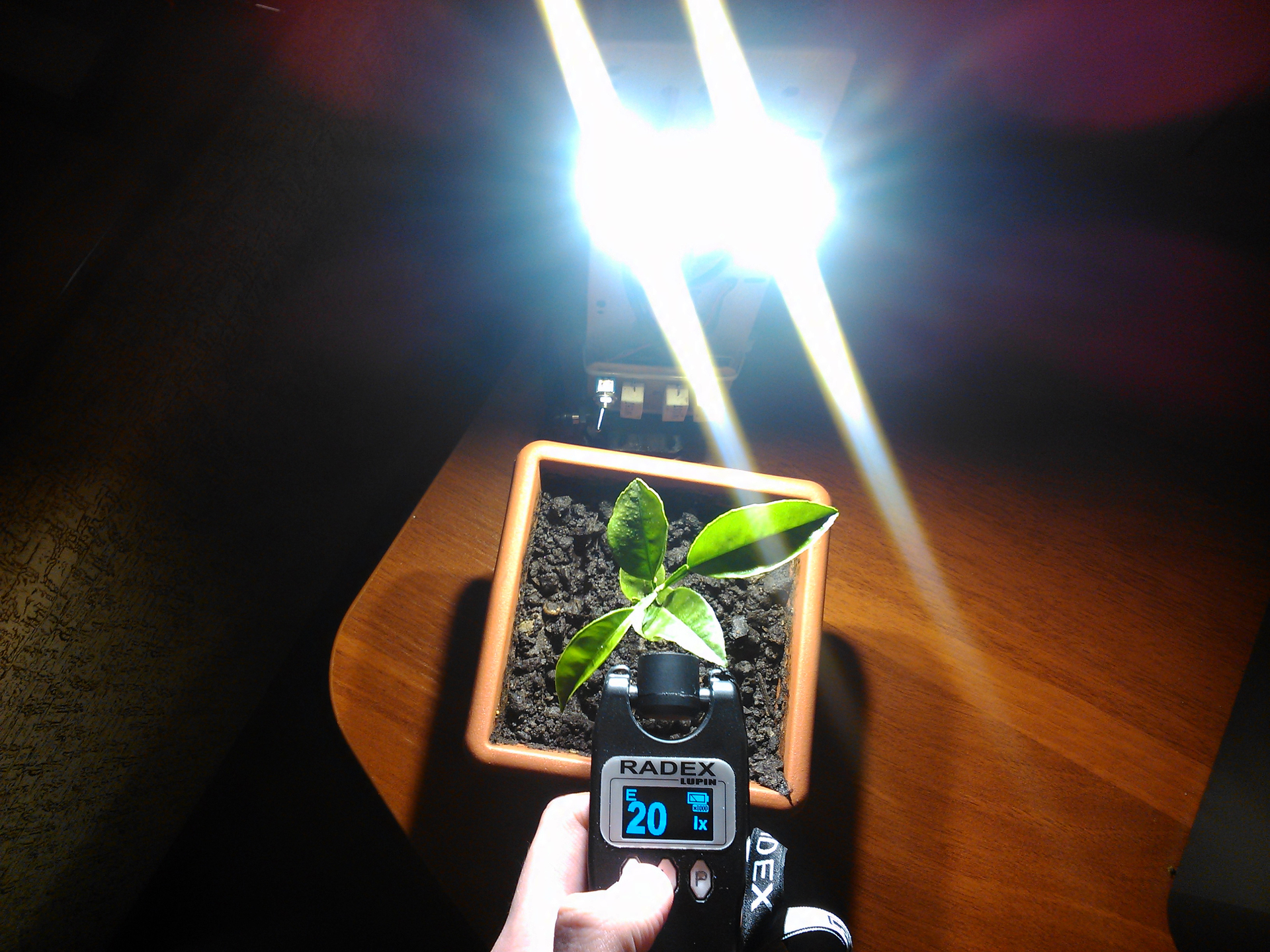
ABOUT! And this is my homemade LED lamp. Judging by the testimony, the orange should be pleased. However, it actually grows well.
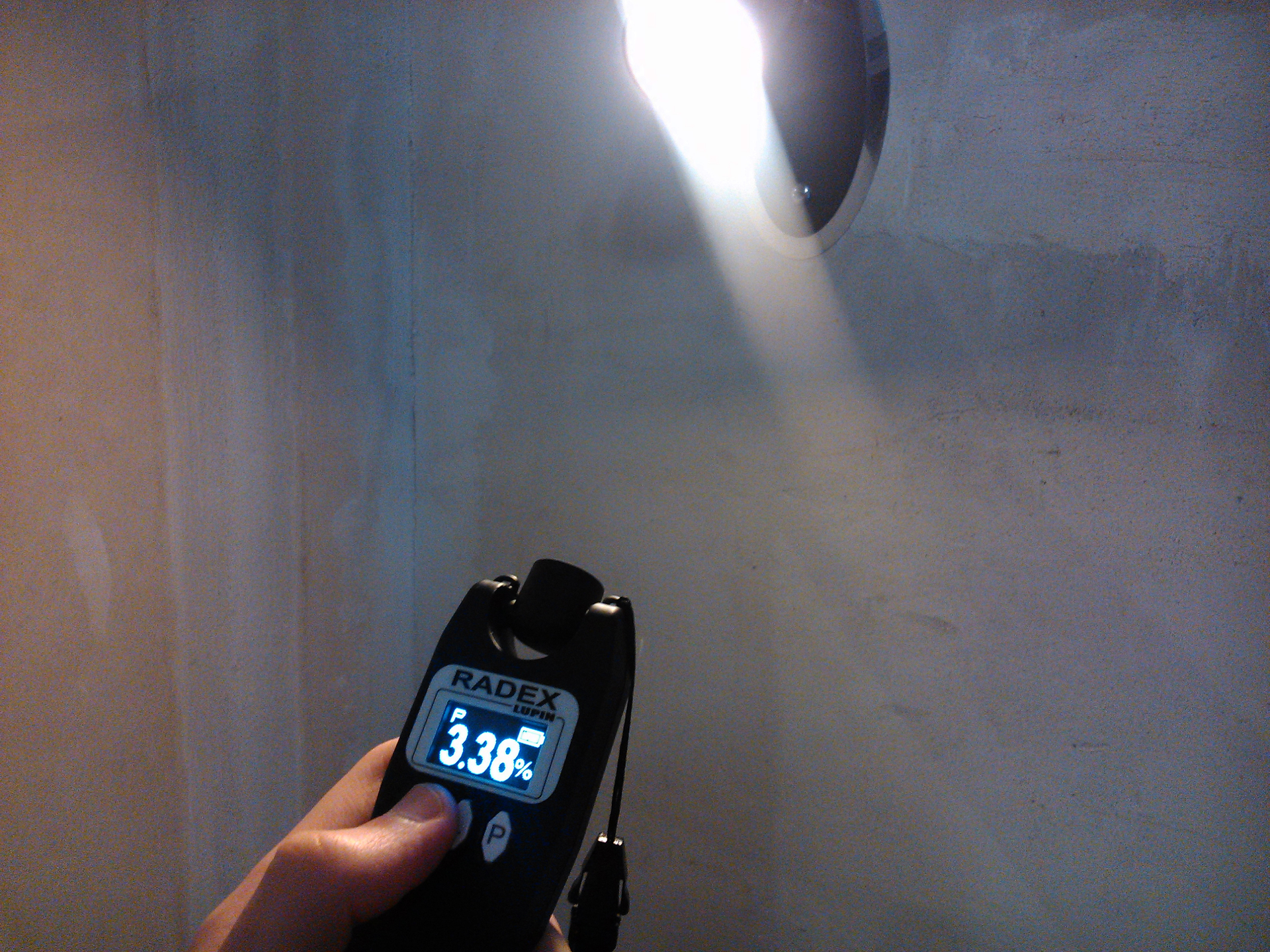

Bedside, under it I usually read. More than 50 lux - so you can!
Okay, they poked, they looked, they wrote it down in a notebook, that the light bulbs need to be changed - this is not so interesting. Let's try to get a little more data? We take our luxmeter and connect to the laptop via USB
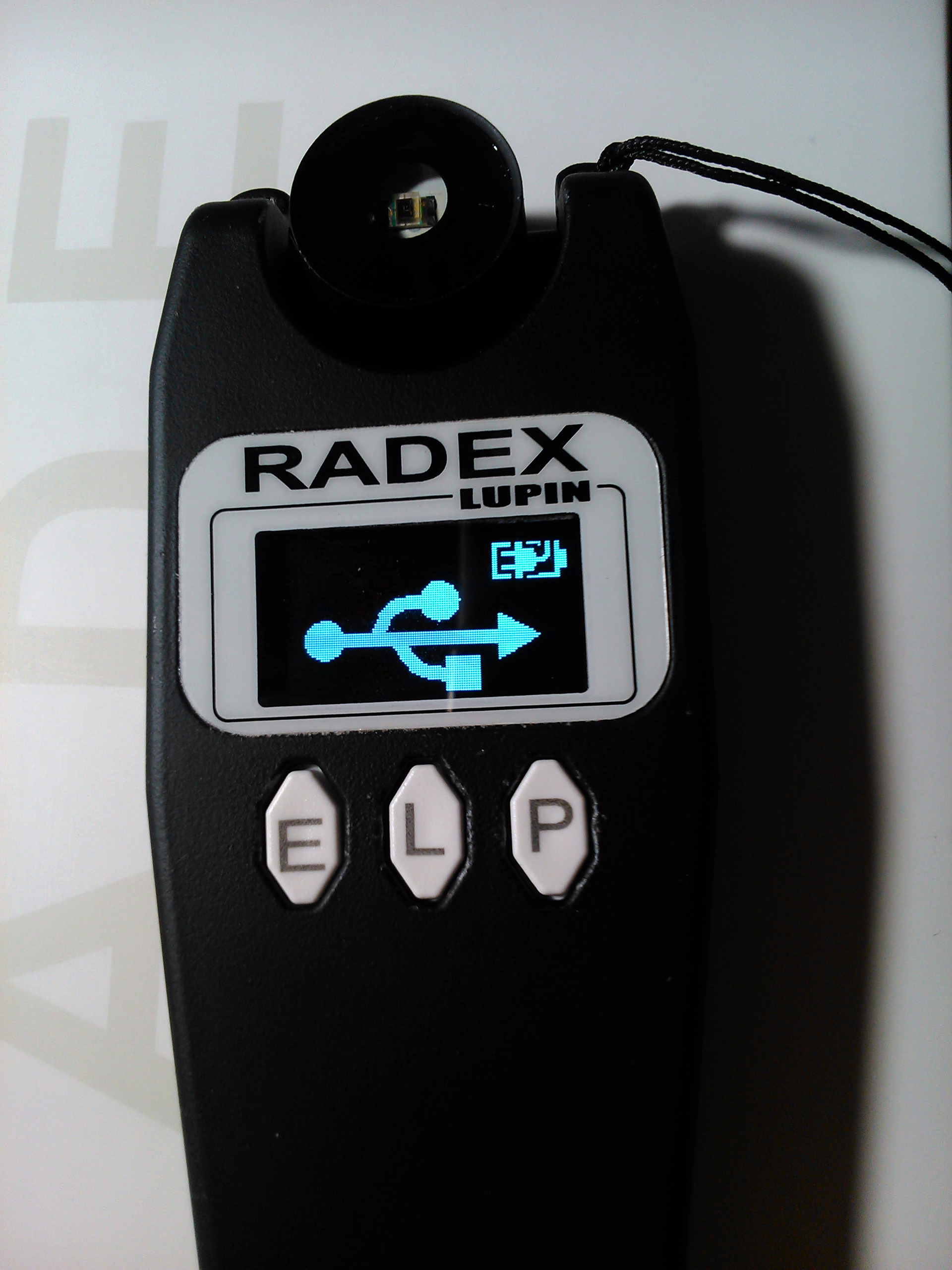
Great, Lupin realized that they wanted from him and, just in case, started charging. But Windows didn’t pay much attention to it ... Strange, for some reason I was sure that it would define itself as a flash drive and offer something to install. Then you have to walk to the site of Dadzhet and download this program.
Now, that's better. Further, further, further, ready ... and what is this?
FTDI? That is, the light meter does not build itself into a HID, but simply pretends to be a COM port? Looks like I just had an interesting little idea ... Ok, let it wait. For now, run the program.
Wow, krakozyabry! Long time I have not seen these) Okay, update, since they offer
Here, now everything is in order. We start measurement
Clearly. I wonder what standards the color strip meets?
This is what they call professional treatment. Well, in general, the way it is, at least here you can look at a couple of interesting graphs. By the way, after the word "Oscillogram" my little idea was strengthened in the desire to be realized. Do not forget to be. Let's see at what frequency my desk lamp pulses?
Oh you, what a good lamp! The bursts at 50 and 100 Hz are clearly visible, but they are clearly not enough for the program to consider this business a pulsation.
Chinese flashlight with PWM brightness. In the chandelier so hang not. By the way, do you remember my homemade watches on past photos? Let's poke them?
Well, yes, the dynamic display on the shift registers is nothing unusual.
By the way, Dadzhet actively recommends using Lupin as a tool for testing monitors and other screens. And I have just at hand either a monitor or a screen. Let's poke him too?
Good monitor. Judging by the spectral analysis, the frequency of PWM is somewhere around kilohertz, while everything above 300 Hz is of little interest to us. You can consider the picture almost static.
The phone is also doing well, the light meter does not see any bursts here at all. It seems that nightly gatherings in the Telegram do little to hurt my eyes. I wonder what will happen if ...
True, the picture is familiar? This I put the flashlight in strobe mode. Well, what I wanted, I got it. True, now I still want to check one of my theory ... Let's open the device? To do this, simply unscrew the three bolts on the back cover and calmly remove it. But at the same time we take off our hat to the developer of the gadget, who guessed not to stuff the case with snaps
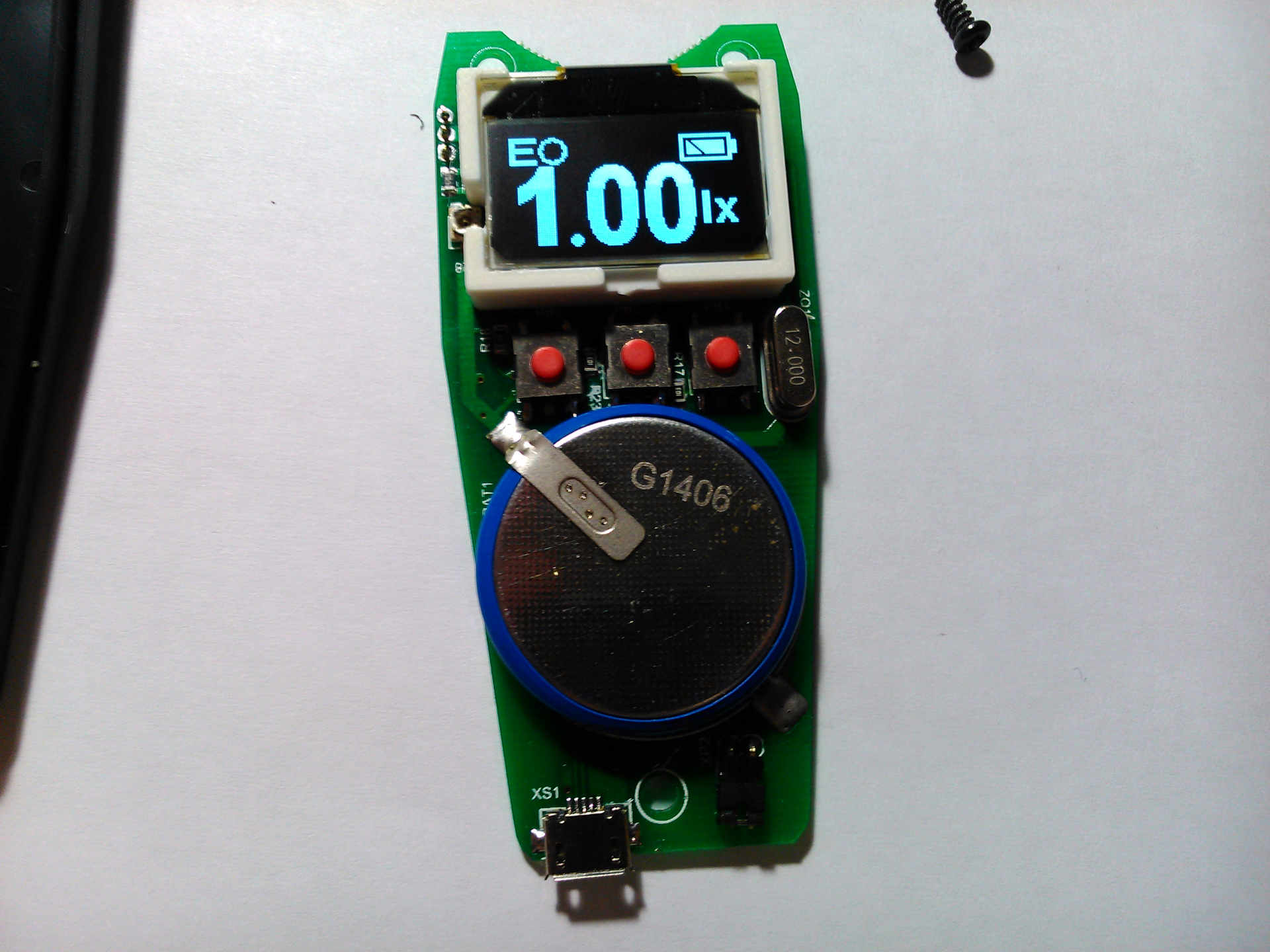
So, while I like everything: the board looks neat, the photosensor is removed, and the elements are even well-sealed. True, the battery, I expected to see a square, not round. We remove the case and turn over the board
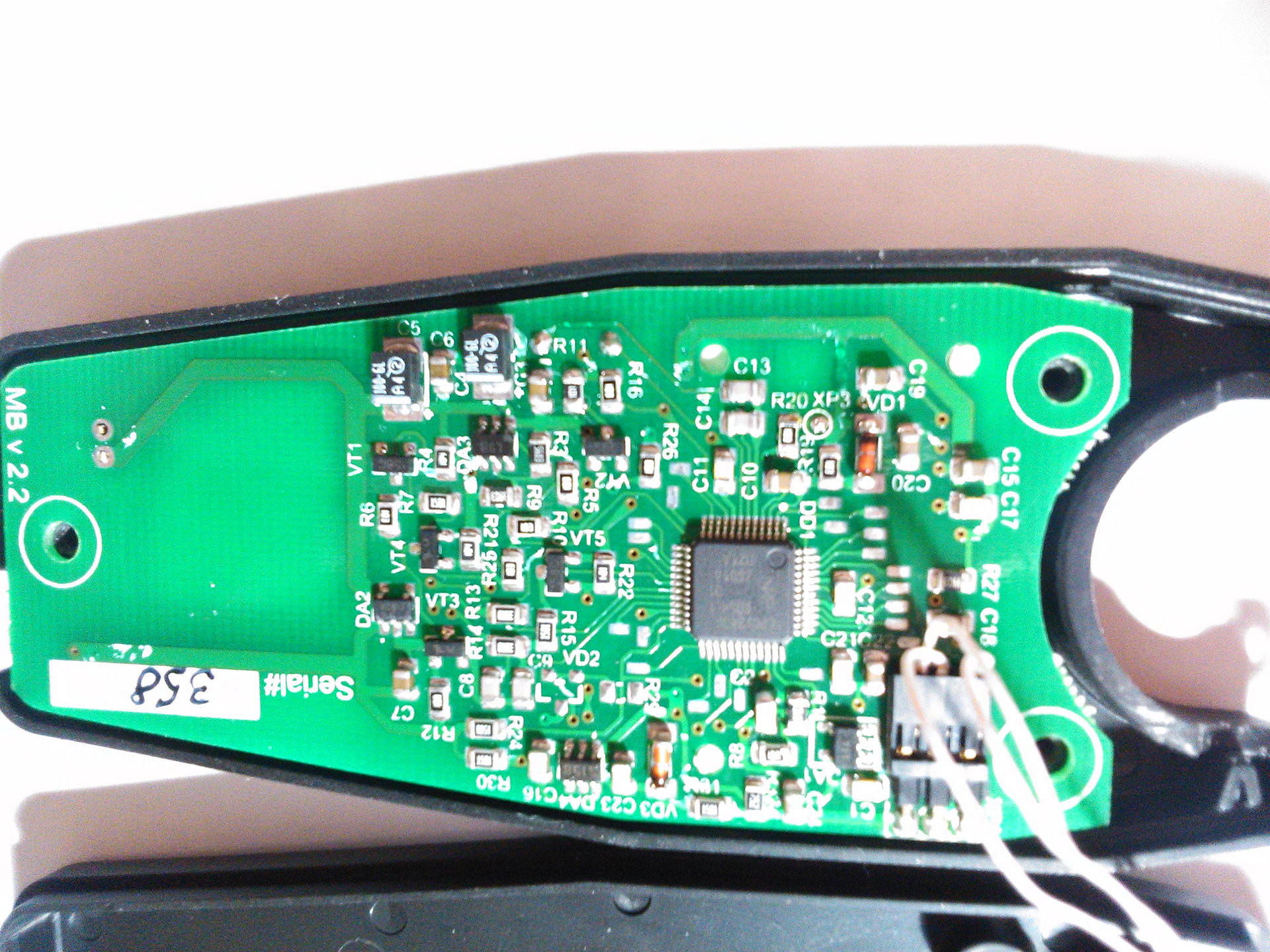
It seems that the entire luxmeter is built on a single 32-bit ARM microcontroller and a heap of strapping. By the way, where is mishka from FTDI? Now it remains only to carefully look at the contacts for the photosensor and poke them with a voltmeter.
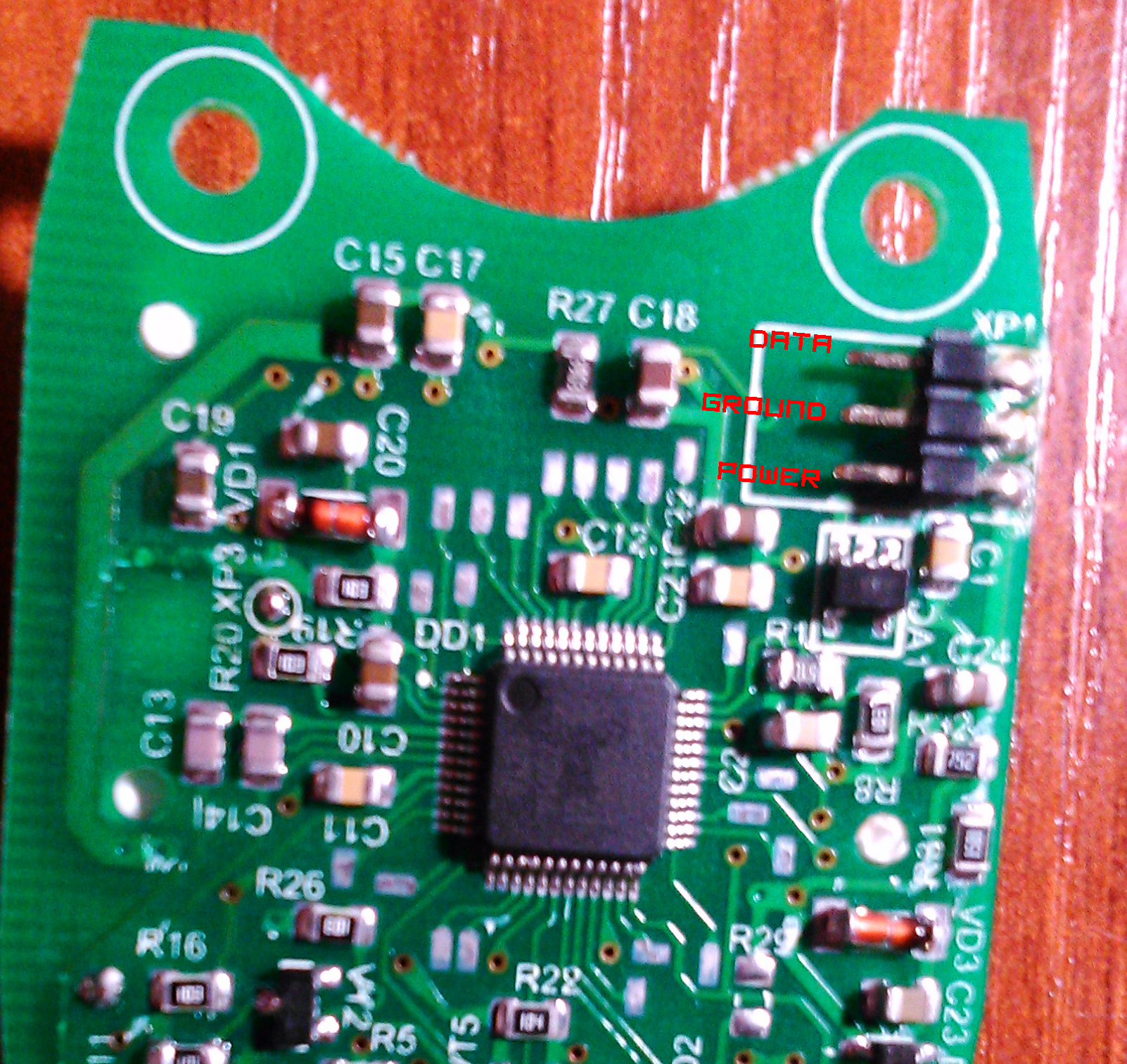
It looks like pinout looks like this. Let's feed some meander on the data leg?
They filed a meander - they got a meander, or rather what they are trying to be. And now let's pretend to be an antenna
Yeah, a tip at 50 Hz, he eats. All this means that the input from the photosensor is energized (and what did you want from the photodiode?), And the ARM controller is in charge of everything else. That is, if you take the leg of data somewhere outside the case, we can get quite a workable oscilloscope. Cool, right? And since the data goes through the COM port, nothing prevents us from clinging to it and looking at what is going on there.
So the data leg is grounded.
And so, it is the same, but it is attracted to the power supply, which, by the way, is in the whole scheme 5.00 volts. It remains only to understand what is contained in these four bytes of data (and it seems to me that the ADC-values and checksum are there), write a small receiver of this data, which will not convert them into suites and the pocket oscilloscope is ready! I guess I'll take care of it when there is time. In the meantime, collect the device back and tighten the screws.
And what?
It turns out that in all tests, the Radex Lupin is an excellent suite, bright and, most importantly, a pulsmer, which will allow you to select high-quality lighting in the room, determine the monitor’s decentness, choose a really good light bulb from a good ten and extend your life, so necessary eyes. And if your hands grow from the right place, you can use Lupin as an entry-level oscilloscope and much more. By the way, using it this way can be quite inexpensive - the retail price of a luxmeter will be only 4900 rubles, which is much less than that of any professional luxmeter brought into the state register.
Oh yes. Buy this device here: reference
Yours sincerely, turning your light meter into an oscilloscope and, at the same time, into a coffee maker, GrakovNe
Source: https://habr.com/ru/post/368363/
All Articles